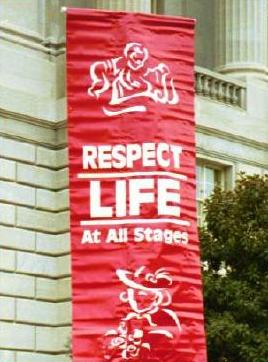 A longer version of this article appeared in Soul, Oct., 1999. Updated most recently in April, 2010. Assisted Suicide or Assisted Life? Mary Meehan "In Oregon right now, assisted suicide is considered a medical treatment," attorney Rita Marker told a conference in Washington, D.C., in March, 1999. Holding up a little pill bottle, she said that an Oregonian who is "diagnosed -- or misdiagnosed -- as having six months to live" can receive a bottle that says something like: "Take all pills with a light snack and alcohol to induce death." Marker, who heads the International Anti-Euthanasia Task Force, was speaking at a Catholic conference that considered obstacles to building "a culture of life." Oregon was then the only state that specifically permits assisted suicide, but Marker warned that it "will be proposed everywhere." (Washington State later legalized it.) In assisted suicide, doctors provide lethal drugs, and patients swallow them or inject themselves with them. In direct euthanasia, doctors give lethal injections. Catholics have joined many others--believers and non-believers, medical professionals and lay people--in resisting pressures to legalize both forms of killing. Speakers at the conference stressed the importance of forming coalitions to oppose the legalization of assisted suicide and euthanasia. "Form coalitions now," Marker urged, mentioning disability groups and doctors' and nurses' organizations as good coalition partners. She also noted that lawyers and doctors who work in poverty areas tend to understand that poor people are vulnerable to pressures for euthanasia. Also vulnerable are old people of all incomes and anyone who has a serious disability. They are susceptible to psychological distress--often including depression--and to economic pressures in this era of managed care. Marker stressed the need for alternatives, including better efforts in pain control. She urged conference participants to "go to bat for" people whose pain is not adequately controlled. Dr. Walter Hunter, an expert in hospice care, said that there is "simply no excuse" for serious pain in dying patients. And Dr. Eric Chevlen, a cancer specialist, suggested that patients should fire doctors who do not provide enough pain control. Marker noted that families who care for severely-ill or disabled patients at home also need assistance. Many family members supported retired pathologist Jack Kevorkian when he helped their loved ones commit suicide. But if "you scratch the surface and look a little further on that," she said, "you'll find that often the family was exhausted or at its wit's end." So it is necessary, she suggested, to build "community support systems for the family." What can you do to help those who are elderly and/or disabled resist pressures for suicide and euthanasia--and rediscover the joy of life? A wealth of literature and experience suggest the following:
  People who are involved in the community and encouraged to live life to the fullest usually want to keep on living. They don't sit around plotting their own demise, hoarding pills for an overdose, or asking doctors to give them lethal injections. They haven't forgotten the joy of life.  |